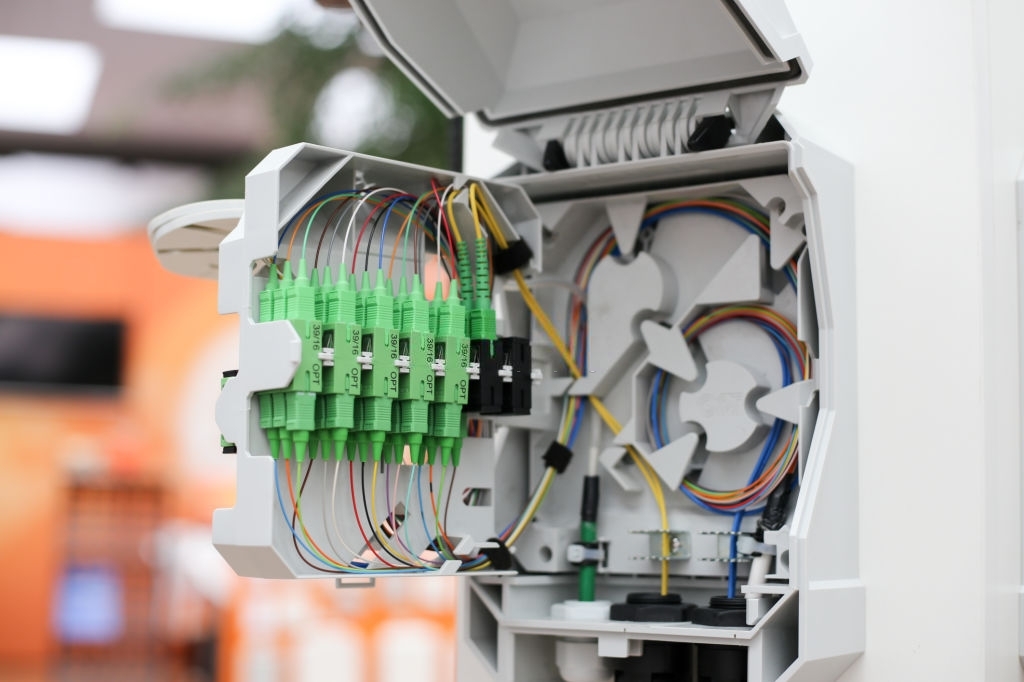What about the future of broadband technology? While we’re getting used to using a fiber-optic cable and coaxial cable, there’s already a new technology on the horizon:
GPON (Gigabyte Passive Optical Network), one of the most significant breakthroughs in internet connectivity in the past few years.
Gpon stands for Gigabit Passive Optical Network, and it is shaping up to be one of everyone’s best bets when it comes to high-speed internet.
Many factors make Gpon significant, but the central aspect is its high speed. When compared to other internet technologies, Gpon has the highest download speed.
Gigabit-capable Passive Optical Networks (Gpon) is a telecommunications technology that delivers high-speed internet over optical fiber.
- Understanding GPON Architecture: How It Works?
GPON architecture is a passive optical network that uses point-to-multipoint fiber to the home connections.
GPON architecture is currently one of the most commonly used access technologies in networks worldwide because it supports a wide range of services, such as ultra-high-definition television and very high-speed internet connectivity.
GPON technology utilizes passive optical splitters, which enable network deployment that includes a single optical line terminal in a central office to 32 or 64 homes.
GPON networks distribute downstream data at a rate of 2.4 Gbps and upstream data at a rate of 1.25 Gbps, which allows them to support more devices simultaneously.
GPON architecture allows for easier network equipment installations, which decreases operational costs by requiring less civil work and fewer technicians on site.
GPON supports more bandwidth than any other PON technology. The architecture is based on FTTP (Fiber-to-the-Premises) or FTTH (Fiber-to-the-Home) connections.

- What Are The Benefits Of Gpon?
Do you have a home internet connection through broadband, cable, or fiber-optic cable? Then you probably already know all about the advantages that these types of connections provide.
With the constantly increasing number of devices that we own and use daily, it’s more important than ever to have a fast and reliable internet connection. Here are the benefits of Gpon:
i. The technology is simple yet reliable
Unlike fiber-optic cable, which requires cables to be installed from your home to the nearest point of presence (POP), GPON only requires a single line to link your local exchange or cabinet with the hollow ‘point of presence’ box at the end of your road.
While optical splitters are required to deliver a connection to every home, the process of installing them is much more straightforward than the process of laying down new cables from buildings all over your area.
ii. GPON can be used without disrupting existing infrastructure or services
In many cases, entirely new infrastructure would have to be built to provide high-speed internet with the latency and bandwidth that GPON provides.
However, as GPON can be installed into existing infrastructure without disrupting services or requiring a new connection for every building, it means that the technology could potentially provide faster links to more people sooner.
iii. The network is future-proofed
Because all traffic is combined onto one network, it is much harder for the network to become overloaded.
GPON allows equipment manufacturers to build advanced components that can specifically handle traffic on a household or business basis.
The ability to isolate internet users means that one will carry out the upgrade without upgrading the entire network at once.
iv. The technology can continue to be used for decades
GPON services are long-lasting, at least for the next five to ten years. Although it’s still early days, there has been no final period given for when GPON services will reach their peak – unlike fiber-optic cable, which is beginning to struggle under the weight of user data.
v. It can provide high-speed internet and HD TV signals
GPON allows an internet service provider to provide up to 10Gbps downstream and 2.5 Gbps upstream connections to users and full HD and 3D television services.
It is an excellent complement for existing fiber technology, which can handle high-speed data transfer but struggles with providing HD TV broadcasts.
vi. It can enable tele-healthcare services
GPON is already being used in some homes to use remote monitoring equipment for elderly patients or those with long-term health conditions.
GPON’s ability to provide high-speed internet and HD TV signals make it perfect for enabling these tele-healthcare projects.
vii. GPON can provide high-speed internet and phone services
GPON is the only technology providing high-speed internet and phone services over a single connection. It means that GPON can reduce costs for telephone companies, as they will no longer need to carry out costly upgrades to lay new cables for their customers.
viii. GPON can be used to reduce energy costs
The hardware in GPON design is more energy-efficient than current networking technology, as it requires less power and cooling.
The overall running costs of a GPON network are lower than those of other networks, which means that the savings could be passed onto end-users through reduced prices.
ix. GPON can provide uniform access to high-speed internet
GPON can give equal access to all users on a network. While some broadband technologies can allow providers to implement traffic management practices that prioritize certain services over others, GPON can’t do this.
Conclusion
GPON is an exciting new technology that could provide faster connections for years to come – and all at low costs to both consumers and service providers.
GPON is already being used as a cost-effective solution for high-speed internet connections in the short term.
At House of IT, we’ve installed GPON hardware in-house to provide our customers with the best service possible – and at a reasonable price.

